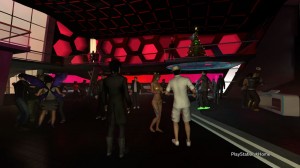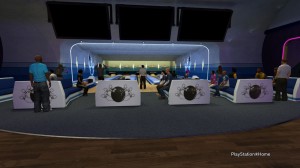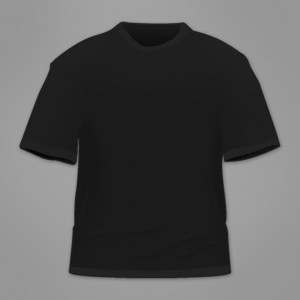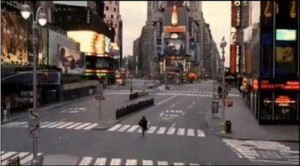What Makes A Home Space Popular?
by Cynella, HSM team writer
When you load into Home, which spaces do you tend to frequent? Ever stop to wonder why?
If you’ve spent any great length of time in Home, you’ve undoubtedly noticed that some public spaces are, well, rather abandoned. We don’t need to name any of those locales, but it is quite sad to stroll through a beautifully-rendered and painstakingly detailed space…only to realize that you’re the only one there.
Conversely, there are some public space in Home which, months or ever years after their release, are still heavily visited.
Why?
What causes this dichotomy? Can we actually identify some common features of what goes into a successful public space?
Do you immediately jump to Sodium and play Salt Shooter? Do you look for a place that you feel comfortable in? What is it that makes a space popular? Is it the advertising? A game’s popularity? Or is it the interactivity that the space provides that keeps us coming back for more?
One clue may be music. To many cultures, music is an important way of life; archaeologists have discovered musical instruments dating back as early as 7000 B.C. Thus, it should not shock you that music is one of the factors that keeps people coming back to a space. At present, there are roughly a dozen different spaces in Home which feature dance floors, and virtually all of them draw constant traffic.
With the ability to vote on songs, Central Plaza is one of the best places to go, dance and meet new people. Just be prepared to hear “Chain Swing” a few hundred times while you’re there.
Ratchet and Clank is another space that draws in the crowd with its dance floor. A disco ball circles around, while the same song plays over and over again. This personally is not one of my favorites, but you will always find a large crowd.
(Editor’s note: R&C is probably my most-frequented haunt in Home. In case you want to listen to the Groovitron song on YouTube, it’s called “Let’s Celebrate” by Nelson.)
Singstar was the first space in Home to offer a dedicated club environment — a place solely designed to dance the night away. This place still remains popular today due to the periodic updates, the latest containing a christmas tree, actual snowfall, new music and new videos. 
With the addition of The Playground came the ability to purchase music for your personal spaces. Although there are a number of people that purchased the Boombox virtual item, you will still find several people getting down, atop the Playground, to the best 80’s funk that never existed.
There are several more spaces that are popular due to their addition of music, but with the new group chat, I see more and more people relying on the power of the R2 button to pipe in their own music.
As an aside, let’s talk about ambient sound design for a moment. How much more real did Central Plaza feel when you heard your avatar’s footsteps crunch in the snow? Or when you heard the swirling wind and background gunfire during the Helghast invasion? These little aural touches can make a world of difference.
One obvious element of many public spaces: games. Games have been an important part of every major human society in history. The ability to play and take one’s mind off of work and problems is a necessity. To quote Eric Hoffer, “Take away play, fancies, and luxuries, and you will turn man into a dull, sluggish creature, barely energetic enough to obtain a bare subsistence.”
In Home’s early days, the Bowling Alley was the place to go. It featured bowling, pool and various arcade games. Virtually unchanged today, there is still a long line to play (abetted somewhat by the queue system). 
nDreams’ Xi was a huge sucess in the few months that it was available in Home. It forced people to work together to solve its various puzzles, and the games were fun. I met a lot of the friends that still occupy my friends list today whilst playing Xi. One of the incentives for finishing the game were the three nice trophies that you could display in your personal spaces.
 When Sodium arrived, so did more intense gaming features. Salt Shooter remains one of the most addictive games on Home today. The ability to purchase additional levels keeps people coming back for more, and the conversion rate of users to Sodium Pilots (namely, those who bought the extra 45 levels of Sodium for five dollars) was, I believe, approximately one in four — which is a dramatic success.
When Sodium arrived, so did more intense gaming features. Salt Shooter remains one of the most addictive games on Home today. The ability to purchase additional levels keeps people coming back for more, and the conversion rate of users to Sodium Pilots (namely, those who bought the extra 45 levels of Sodium for five dollars) was, I believe, approximately one in four — which is a dramatic success.
Leaderboards help to entice people to play the various games around Home. The challenge of being the best can cause people to keep coming back to regain their top spot on the board. The inFamous Space was the first that I can remember which rewarded special items for achieving recognition on the boards. To this day, I envy those that were able to win the outfit.
The Neptune Suite was the first personal space I ever bought. Up until its release, I had never purchased a thing on Home. Its appeal for me was simple: it was visually appealing, contained teleporters, had free rewards, and of course had two mini-games that you could play with your friends. Having games in a personal space meant entertaining guests without risking dull lapses in conversation.
Today, there are several personal spaces with games; it can be suggested that there is an entire segment of the Home population for whom, if a new space doesn’t contain a game of some sort…they simply don’t buy the space.
(Perhaps that is why the new Magic: The Gathering space public space contains six different games?)
SlapHappy Sam is the first game of its kind: it requires you to purchase not only the game, but access to its public space. Included is a phonograph for your personal space that plays the game’s theme music. It is not surprising that this game made it on SCEA’s top ten list of most downloaded items for January. I think we can expect more of this type of game play to come.
 What would the appeal of a space be without free items? Although Home started us off with a selection of default clothes and furniture items, we all look for a way to be unique. When I first started using Home, I refused to purchase any items on my account; my husband was spending enough for the both of us. I spent many hours seeking out every space that featured free items, and I was not alone. From playing a game to unlock rewards for the bragging rights, or to simply finding more clothes to expand your default wardrobe, free rewards help to bring higher traffic numbers to a space. Yes, some users complain that receiving free T-shirts is needless clutter (alleviated considerably by the introduction of the storage feature with the 1.4 core client upgrade), but for a user who cannot afford to spend money on virtual items, this is a godsend.
What would the appeal of a space be without free items? Although Home started us off with a selection of default clothes and furniture items, we all look for a way to be unique. When I first started using Home, I refused to purchase any items on my account; my husband was spending enough for the both of us. I spent many hours seeking out every space that featured free items, and I was not alone. From playing a game to unlock rewards for the bragging rights, or to simply finding more clothes to expand your default wardrobe, free rewards help to bring higher traffic numbers to a space. Yes, some users complain that receiving free T-shirts is needless clutter (alleviated considerably by the introduction of the storage feature with the 1.4 core client upgrade), but for a user who cannot afford to spend money on virtual items, this is a godsend.
The Resident Evil 5 space offers a mini-game with five available Home items to win. The prized reward is the Jeweled Beetle. Not everyone knows how to win this; through teamwork, it can be achieved. If you own the RE5 game, after finding all the beetles, you can unlock the Wesker glasses. I don’t know about you, but I find these to be the most attractive glasses in Home.
Siren is a game in Home that offers several free costumes and an alcove for your personal spaces. Many hours have I spent in Siren, winning the black dress, nurse’s uniform, doctor’s uniform and the alcove. Even after winning these items for myself, I have helped several strangers to earn them as well.
The arrival of Namco brought more free items then we knew what to do with. Playing on the vending machines was like recieving presents on Christmas morning. This space also offered other games as well with more rewards. With the combination of free items and games, this space became an instant hit.
Other things that help with the popularity of a space: updates and realism.
 I know realism sounds like a funny word to use when describing a virtual reality, but it’s extremely important. If a space looks like a place that you are familiar with, or in some way aesthetically appeals to you, you’ll probably frequent it more often. Little details, such as insects flying around plantlife, or rippling water, go a long way towards the immersive experience. Imagine Seaside of Memories without the background noise of the birds flying around?
I know realism sounds like a funny word to use when describing a virtual reality, but it’s extremely important. If a space looks like a place that you are familiar with, or in some way aesthetically appeals to you, you’ll probably frequent it more often. Little details, such as insects flying around plantlife, or rippling water, go a long way towards the immersive experience. Imagine Seaside of Memories without the background noise of the birds flying around?
Even in a fantastical setting, there’s little question that the greater the level of detail, the easier it is to suspend disbelief. And let’s not forget that all of us — all of us — suspend disbelief to some extent in order to enjoy a virtual lifestyle.
Periodic updates, on the other hand, are somewhat rare for Home spaces; after all, I imagine it’s a somewhat expensive proposition. It can make a huge difference in keeping people coming back, however: the sense that the space is continuously evolving and changing, just as a real locale might. Something as simple as changing the time of day, which LOOT is experimenting with in the Amaterasu Yacht personal space, can make a difference. Offering new music, lighting and videos, as SingStar has, can encourage people to return.
 One critical element to a successful public space may be, to an extent, the visual spectacle of it. You can have a fairly thorough Home experience with the sound off, but Home cannot be enjoyed with the screen off. Being able to provide a visual feast is extremely important to user retention. Of particular note, Home spaces which offer a certain level of three-dimensionality — multiple tiers with different senses of elevation and different views — really seems to help provide a sense of scale.
One critical element to a successful public space may be, to an extent, the visual spectacle of it. You can have a fairly thorough Home experience with the sound off, but Home cannot be enjoyed with the screen off. Being able to provide a visual feast is extremely important to user retention. Of particular note, Home spaces which offer a certain level of three-dimensionality — multiple tiers with different senses of elevation and different views — really seems to help provide a sense of scale.
A more subtle element, perhaps, is having a visible place to chat. Look at how busy the park benches in Central Plaza typically are. Or the benches with the scenic view at the upper level of Irem Square. Developers, take note: if you want to encourage users to stick around, give them a place within your space that’s designed for it.
One note about visual spectacle, by the way: that doesn’t necessarily mean lots and lots of video screens playing at the same time. The more video content that gets shoehorned into a space, the longer it takes a user to load it. Treat video the way you would treat a bhut jolokia: a little touch of it goes a long way. The visual spectacle should be in the space itself, not necessarily the videos playing in the space.
Developing a public space for Home is not the same as developing a video game title; a Home space must have sufficient attractions to keep people coming back long-term — for years on end, perhaps — with the promise of greater revenue as a reward. With more than 24 months of open-beta results and trends to study, hopefully the number of empty public spaces in Home will decline, and the Home experience will continue to improve for us all.
So: what elements do you think are the foundation of a good public space in Home?



I was wondering when someone would produce an article that touches on this subject. I say this because there are many locales on Home that aren’t populated yet should. I personally LOVE the Pixeljunk Public Space due to the ambient trance-like music there and thanks to that said space I own the soundtrack.
I frequent the Mall a bit more than I should (backing out of my personal goal) due to the abundant drama that is there. A lot of people appear there to stand in attention and most “noobs” go there to troll; it’s like Central Plaza now and sometimes the psychology that is displayed there really intrigues me.
This is a really good article, Cynella. Cheers! =)
You hit the mark with this one Cynella. I don’t go to or stay in a lot of public spaces in Home a lot. I have a lot of friends and clubs that I visit in private, but when I do go to one I want it to be visually stunning and also a game there to play doesn’t hurt. When I first came into Home one of the places I would frequent was Red Bull beach and the air races there. That place has incredible scenery and ambiance. I would also go to plaza and Singstar to dance and have fun with my friends. Now I actually look for public places that are not so popular, because I want some peace and time away from griefers with my friends in a setting thats not private so more can join us. Thanks for the article it makes us think, and that’s always a good thing.
You nailed it, Cynella. It’s all about ambiance, activities and loot. The obvious activities are games, but activities also include dancing and conversation. It’s surprising how some comfortable-looking benches can make a space feel inviting. Exploring is also an activity — the vast deserts of the Sodium spaces are ideal for this.
A good glitch will draw a lot of people to a space, but those tend to get patched. I really miss drifting around outside the space station in the Novus Prime space.
One spot that’s been circling around in my head since I read this: Sully’s Bar.
Sully’s comes *so* close for me. I want to spend more time there. It’s got background music. It’s got a cool bar to pull up a stool at. It’s got an arcade game. It has so many of the elements of a great public space, and yet I just can’t seem to spend a ton of time there. Maybe because I can’t get behind the bar, as can be done at the Gamer’s Lounge or Scorpio’s.
Sully’s, though, does tend to draw a healthy crowd. It’s always busy when I go there. So maybe I’m just being overly picky.
Norse, I actually met Terra there I used to hang out at Sully’s non stop. Met a great bunch of people. When they removed the rail glitch that allowed us to get behind the bar, I moved on. I went there the other day to visit, but it just wasn’t the same.
I used to hang out at Sully’s non stop. Met a great bunch of people. When they removed the rail glitch that allowed us to get behind the bar, I moved on. I went there the other day to visit, but it just wasn’t the same. 
Once upon a time, Sullys was the place to go to meet people who could type in a literate fashion if you didn’t feel like joining a club or group. We were a wise-ass lot, and while we kept the secret of the rail glitch close, we didn’t mind sharing tips with those who spent the time trying to figure it out themselves and could actually write whole words and sentences out.
I’d say 99% of all my long-term Home friends date back to that era.
And you’re both right; Sullys almost does *it* -- it has the not-so-overbearing music, it has the right kind of atmosphere, it even has a nice outdoor alcove that you can get away to. However, it’s missing that “X” factor that keeps you from coming back, and for me it’s the glitch and the people I made friends with there. When the glitch was taken from us, we were displaced. And Sullys just wasn’t Home anymore.
Have I gone back? Sure, once or twice, but only with people who I met there and were craving nostalgia. It never fails though; we all end up agreeing it just isn’t the same.
I find the Red Bull beaches relaxing and probably a good place to have a party in a public space. There’s hardly ever anyone there when I go. I think it’s a shame. I like how they have the three beaches interconnected. I wish they would interconnect more Home spaces like this. Gives me a better feeling that I am really in the virtual world.